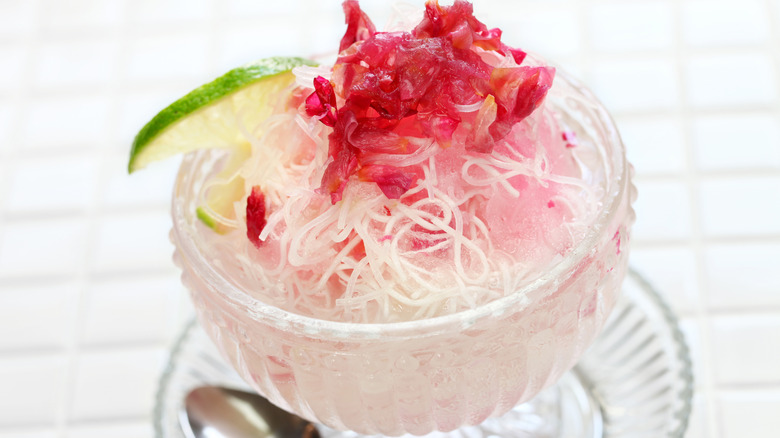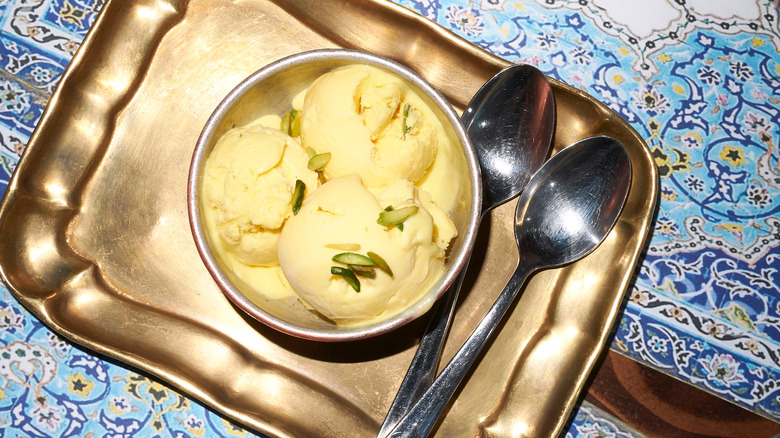Persians Originally Made Ice Cream With A Carb-Filled Favorite
When we think of ice cream, we tend to picture a frozen dairy dessert made of cream or custard, blended with milk, sugar, and assorted flavors. But in ancient Persia (modern-day Iran) during the reign of the Achaemenid Empire, they developed a very different take on the treat that used pasta as the base. Called faloodeh, it is believed to date back to 400 B.C. and may even be the first ever chilled confection to have emerged on the scene, although records indicate that these very same Persians may have already created an ice-cream like product of sweetened ice, fruits, flavorings, and toppings about 100 years earlier.
The iced concoction historically consisted of noodles, rose water, lime juice, and cherry syrup. These noodles were initially made from wheat, rice, maize, or arrowroot, but today the recipe typically calls for vermicelli rice noodles you can buy in stores or markets. Back in its formative years, a domed ice house structure called a yakhchal was used to keep the ice for faloodeh cold. It is prepared by freezing the sugary syrup ingredients, crushing them, blending the mixture with the noodles, and freezing the mixture again, creating a delightfully crisp-but-melting texture for the noodle. Faloodeh draws frequent comparisons to granita, an Italian-style flavored ice, and the dessert actually has more similarities with sorbet than ice cream. Its roots are traced to the Iranian city of Shiraz, and in a nod to its birthplace, it's also known as faloodeh Shirazi.
Faloodeh remains popular in Iran today
While faloodeh may have originated thousands of years ago, it hasn't been reduced to a footnote in history. Iranians still enjoy eating the traditional frozen dessert, and this unorthodox ice cream made with noodles is found in coffee and ice cream shops throughout the country. Many places incorporate the spice saffron to imbue a yellowish hue, giving it a fancy twist that adds color and light floral notes. Variations on faloodeh have been established in other countries as well including India, which features a falooda milkshake-like dessert with vermicelli rice noodles, ice cream, rose syrup, and basil seeds. In Pakistan, the rice noodles are paired with ice cream topped with pistachios and almonds. There are even regional differences within Iran, with some areas serving faloodeh cold instead of frozen and utilizing an array of different toppings such as seeds and berries.
So what is it about faloodeh in general and vermicelli specifically that makes it so appealing? Part of it has to do with its unique texture, which dissolves on the tongue, and the mild rice flavor of the Vermicelli that absorbs the sweet, sour, and floral flavors. Most places in Iran also often serve faloodeh in tandem with bastani, a traditional Persian dairy-based ice cream typically topped with honey and pistachios, because the tastes meld well together. Faloodeh is the unexpectedly starchy twist on ice cream that has managed to stand the test of time.

